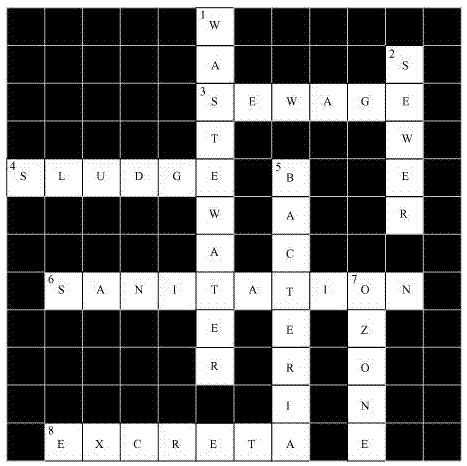Class 7 NCERT Solutions Science Chapter 13 - Wastewater Story
Wastewater Story Exercise 164
Solution 1
(a) Pollutants
(b) Sewage
(c) Sludge
(d) Cooking oil and fats
Concept insight: Important from Exam Point of View.
Solution 2
Sewage is the wastewater containing both liquid and solid wastes produced by human activities from homes, industries, hospitals, offices, etc.
Sewage contains various contaminants including disease-causing bacteria and other microbes. If untreated sewage is discharged into rivers or seas, then the water in the rivers or seas would also get contaminated. If this contaminated water is used for drinking, then it can cause diseases such as cholera, typhoid, dysentery, etc. which may lead to death. That is why it is harmful to discharge untreated sewage into rivers or seas.
Concept insight: Sewage contains liquid and solid waste coming from houses, industries etc. It contains harmful disease causing microorganisms.
Solution 3
Oils and fats harden and block the sewage pipes. In an open drain also, fats block porosity of soil which affects its water filtering efficiency. That is why oils and fats should not be released in the drain.
Concept insight: Fats and oils accumulate and block the drains.
Solution 4
The steps involved in getting clarified water from wastewater are as follows:
(i) Use an aerator to bubble air through the wastewater. A mechanical stirrer or a mixer can also be used in place of the aerator. This helps in reducing bad odour of the wastewater.
(ii) Then, the water is filtered through the layers of sand, fine gravel, and medium gravel. Filtration makes the wastewater clean from various types of pollutants. The water is filtered continuously until it becomes clear.
(iii) Then any disinfectant such as chlorine tablet is added to the filtrate and stirred to obtain completely clear water.
Concept insight: Important from Exam Point of View.
Solution 5
Semi-solids such as faeces that settle down during wastewater treatment are called sludge. This sludge is removed using a skimmer and then transferred to a tank where it is decomposed by anaerobic bacteria to produce biogas. This biogas is used as a low-cost fuel for heating, cooking, etc. It is also used to produce electricity.
Concept insight: Sludge is semi solid waste which is biodegradable and can be treated by micro-organisms.
Solution 6
Untreated human excreta is a health hazard. It contains various disease causing microorganisms. It causes pollution of soil and water including the underground water. Thus, it contaminate the sources of water from which people collect water for drinking and household purposes. When this contaminated water is used for drinking, it cause diseases such as cholera, typhoid, hepatitis, dysentery, etc., which may even lead to death.
Concept insight: Untreated human excreta is considered a health hazard as it may carry disease causing microorganisms.
Solution 7
Chlorine and ozone are used to disinfect water.
Concept insight: Chlorine and Ozone kill microorganisms.
Solution 8
In a wastewater treatment plant, bar screen removes large solid objects from water. The wastewater is allowed to pass through bar screen so that large solid objects such as rags, napkins, sticks, cans, plastic bags, polythene, etc. present in wastewater can be removed.
Concept insight: Passage of wastewater through bar screens is the primary step in wastewater treatment plant.
Solution 9
Sanitation and disease are related to each other as lack of sanitation can cause diseases.
In our country, a large number of people even today do not have sewerage facilities and thus defecate in open fields, railway tracks, etc. The untreated human excreta thus pollute soil and water sources including the underground water. When this contaminated water is used for drinking, it can cause diseases such as cholera, typhoid, hepatitis, dysentery, etc. which may even lead to death.
Therefore, lack of sanitation in drinking water can cause health problems.
Concept insight: Sanitation means to keep a place free from microorganisms.
Solution 10
A citizen has many responsibilities regarding sanitation. Among other things, an active citizen should do the following with regard to maintaining proper sanitation:
(i) Ensure that his surroundings (both inside and outside home) are clean.
(ii) Ensure that the sewerage system in his house is properly managed.
(iii) If he notices some leakage or other problem in the sewerage system, he should report it to the municipality.
Concept insight: Important from Exam Point of View.
Solution 11
Concept insight: Important from Exam Point of View.
Wastewater Story Exercise 165
Solution 12
(ii) (b) and (c)


